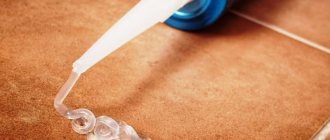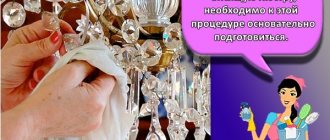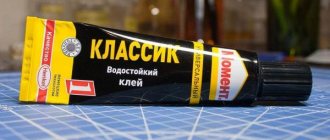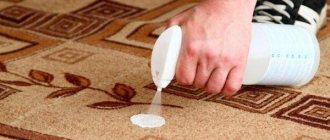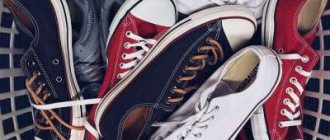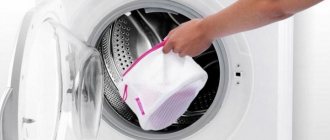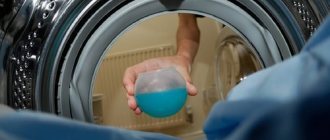The popularity of sneakers and white sneakers is growing exponentially. At the same time, the number of requests on the Internet is growing: “How to clean the white soles of sneakers and sneakers?” Right out of the box, the white rubber sole looks amazing and goes with any outfit, from stylish denim trousers to casual shorts. But a couple of weeks pass and the soles are no longer pleasing with their whiteness, and the unpleasant yellowness on the socks is complemented by black stripes. Are there any real ways to clean white shoe soles?
How to clean dirty tires
- Make a cleaning solution: Fill a bucket with about 1 gallon (3.8 L) of warm water and add 1 tbsp. spoon (15 ml) of liquid soap or dishwashing detergent, stir.
- Dip a clean cloth or rag into the solution, wring it out and wipe the dirty rubber.
- After removing the dirt, rinse the rubber in the sink under running warm water. The remaining soap solution can be used to clean something else.
- Leave the rubber to air dry. Avoid direct sunlight as the sun will damage the rubber.
- If the rubber becomes sticky after drying, use alcohol. Dampen a clean cloth with alcohol and wipe the sticky areas on the rubber, then rinse with water.
Methods that are rarely used
A washing machine is the easiest, but essentially the most useless way to clean shoes. Sneakers and sneakers are loaded into the machine in a disassembled state: without insoles, laces and other removable parts. The washing mode should be selected delicate with the lowest number of revolutions. After the procedure, the shoes are dried naturally or using special shoe dryers. Drying with a hairdryer or near a radiator is strictly prohibited: this leads to deformation. It is unlikely that you will wear “chewed” sneakers after this.
Disadvantage: it is almost impossible to bleach shoes to their original condition.
The eraser is the strangest and most tedious method. However, it works, meaning you will get white soles without using any water. The disadvantages include the amount of time you have to spend on whitening. And your hands will require care after this. One pair of shoes requires a fairly large eraser, but if the sole is grooved, you will have to use small pieces that can whiten the thinnest and smallest grooves.
How to clean a wheel - step-by-step instructions
To clean the wheels from dirt, dust and oil residues, you will have to act according to the following plan:
Finally, a tread is applied to the wheel, protecting the tires from the harmful effects of ultraviolet radiation.
Why do you need to clean?
The rubber seal has a complex design with bends and folds. Dirt, hair, lint and debris accumulate in large quantities in the folds of the cuff - everything that was not removed through the filter and drain hose.
Due to the configuration, the rubber constantly maintains high humidity , which serves as an excellent environment for mold.
Attention! The remains of garbage are subject to rotting and mold infection, unpleasant odors and black spots appear - colonies of fungi and bacteria.
The musty smell not only creates an unfavorable atmosphere in the room, but also permeates washed clothes. Therefore, a responsible housewife should not have any questions about why the rubber band needs to be cleaned.
How to wash rubber - tools and consumables
To wash dried-on dirt from rims and wheels, you will need a device that generates high-pressure water. Such installations are produced by American and European companies, so they are quite expensive, but they can be replaced with a regular hose and a special nozzle that accelerates the stream of water to a pressure sufficient to clean the car.
To remove residual dirt, you will need a brush with medium-hard bristles and a cleaning solution that is used to treat wheels and rims. This solution can be prepared from household chemicals found in the kitchen or bathroom or purchased at an automotive store. Moreover, store-bought products are divided into universal foam cleaners and solutions based on weak acids, which can only be used to treat car rims. By the way, if you don’t know how to remove rubber from a car, try this solution.
To wash the wheels from cleaning agents, you need the same high-pressure device or a hose with a nozzle. But as a napkin that will wipe off remaining water, you need to use only clean microfiber from the package.
Source
Week long challenge
350 km along the highway on tires polished the day before, of which 30-40 km there was good rain - no change in the effect. But after two days, during which the car had driven very little, it became obvious that the blackening effect was going away on the right side. While the front tire still has some shine, the rear tire has turned gray and just looks like it has been recently washed.
But on the left side, the wheels are still deeply black and have a glossy feel, and the effect of the silicone grease is a little more pronounced.
Already at this stage it is obvious that Eclips ranks last in our test. There is no effect from it after four days and 400 km.
After another two days and 50 km around the city, the front right wheel, covered with LAVR, gave up. The tires on the left are still black and have an obvious shine.
A week from the start of the test, the car travels another 250 km, several of which are on gravel roads. This is what puts an end to the cleanliness of the rubber on the left. The tires are covered with a layer of sand, and the rear tires are visually slightly more contaminated. This suggests that the effect of silicone grease was best preserved, because the more “greasy” layer there is on the rubber, the better the sand sticks to it.
At the same time, the wheels on the right, where not a trace remained of the applied products by the time we drove along the gravel road, turned out to be cleaner. This once again confirms that silicone-based products worked after a week and 650 km.
How to clean a wheel - step-by-step instructions
To clean the wheels from dirt, dust and oil residues, you will have to act according to the following plan:
- At the first stage, you need to treat your car tires with a jet of water under pressure, washing away dried dirt and knocking down particularly dense lumps.
- Next, you should prepare a solution that will clean the surface using active chemicals.
- At the next stage, this solution is applied to the rubber. To clean dirt from a tire with a deep tread, the solution will have to be rubbed into the rubber with a hard-bristled brush.
- The solution, which can remove gasoline and oil stains, is highly chemically active, so it must be washed off the rubber after you finish washing off the dirt. If this is not done, the rubber will lose its quality, causing premature wear of the car tires.
- The car tires, washed from the cleaning agent, are wiped dry with a microfiber cloth. The wheel should not be treated with the same napkin as the car body. Traces of solvent or oil will stain the washed rubber.
Finally, a tread is applied to the wheel, protecting the tires from the harmful effects of ultraviolet radiation.
Review of effective gum cleaning products
Popular products for removing odors and mold from rubber washing machines allow you to clean, simultaneously disinfect and refresh surfaces:
- Whiteness (bleach). Suitable for unworn cars, since chlorine can corrode old parts (hose, seal), cracked paint.
- Domestos. It is better to take the liquid form of the product.
- Silit Bang helps to quickly remove rust and scale from rubber.
- Bugs Anti-mold.
- Deo-anti-mold for automatic cars.
- Amway brand products.
- Pemolux.
The listed substances are used for the machine strictly according to the instructions, wearing protective gloves and a respirator. Household chemicals containing chlorine can clean washing rubber and cause burns to the mucous membranes or an allergic reaction.
How to wash rubber - tools and consumables
To wash dried-on dirt from rims and wheels, you will need a device that generates high-pressure water. Such installations are produced by American and European companies, so they are quite expensive, but they can be replaced with a regular hose and a special nozzle that accelerates the stream of water to a pressure sufficient to clean the car.
To remove residual dirt, you will need a brush with medium-hard bristles and a cleaning solution that is used to treat wheels and rims. This solution can be prepared from household chemicals found in the kitchen or bathroom or purchased at an automotive store. Moreover, store-bought products are divided into universal foam cleaners and solutions based on weak acids, which can only be used to treat car rims. By the way, if you don’t know how to remove rubber from a car, try this solution.
To wash the wheels from cleaning agents, you need the same high-pressure device or a hose with a nozzle. But as a napkin that will wipe off remaining water, you need to use only clean microfiber from the package.
What to do first
Before you wash tar from clothes, you need to perform several steps:
- Do not shake or rub the product on clothing. This will lead to an increase in the area of contamination, and tar particles will penetrate deeper into the material. If it has not yet stuck, you need to remove it from the item with a napkin, cotton wool or a piece of paper.
- The adhering mass is cleaned from the item using scissors or a knife. This must be done carefully so as not to cut the fabric.
- The sooner the stain is removed, the better. The bitumen should not dry out and eat into the fabric.
- Any solvents can only be used to clean the working uniform, as they may leave white marks.
How to make a homemade remedy to remove dirt from your car
To prepare a solution that can remove residual dirt from tires, dilute up to half a standard bottle of dishwashing detergent in a small amount of water. Pour the resulting concentrate into a container that is convenient for dipping a car brush into. Due to the abundance of surfactants, the source of which is dishwashing detergent, a homemade solution will clean tires no worse than a factory cleaner.
The rules for using home remedies that can clean wheels are similar to the recommendations of manufacturers of industrial preparations. Before treating tires and rims with home remedies, make sure you wash the tires. Otherwise, the remaining brake dust and gravel will turn into abrasive particles that can scratch the tread when you scrub it off with a brush or sponge. Do not try to clean the wheel with an old cloth that was used to wipe the engine compartment or body - it will stain the wheel with oil or gasoline.
Today there are many different options for car styling. One of the most revolutionary of the long list of methods can be considered painting a car with liquid rubber. This is a relatively new technology that has already attracted the close attention of car enthusiasts. It is gaining momentum more and more, surpassing other means in popularity.
Painting a car with liquid rubber
Liquid rubber coating for cars was developed and launched on the market by the American company PlastiDipInternational. This is a vinyl-based substance that can be considered something between a paint coating and a vinyl film.
It is applied to the surface of the car using an ordinary spray gun and in terms of external aesthetic properties is in no way inferior to the most “advanced” styling options. Today, PlastiDip technology is becoming increasingly popular among car owners both in our country and abroad.
Applying liquid rubber to a car body
Removing traces of bitumen from shoes
Shoes are the most likely to become contaminated with bitumen resin. Walk on asphalt on a hot day and a problem is guaranteed.
If your shoes are leather, you can clean them yourself. And if it is suede or artificial leather, it should be taken to a workshop. Sometimes repainting a darker color can preserve the shoes. The stain will become invisible.
Shoes should be cleaned with gasoline or solvent applied to a piece of soft cloth. Gasoline evaporates from the surface and effectively destroys contaminants without forming new ones. Kerosene has the same properties. Acetone cleans stains, but they can spread on materials, increasing the area of the stain. It should not be used on light-colored fabrics or shoes.
Thoroughly clean only the area where the stain is to avoid damaging the paint. If everything went well, the shoes should be washed using detergents. If a yellowish print remains, it can be removed with hydrogen peroxide.
An effective way to remove bitumen resin from shoes is to freeze it and then thoroughly clean it with a knife. Be careful, otherwise you will damage the surface of the shoe.
Properties of liquid rubber
If you carefully study the characteristics of liquid rubber coating, you will get the following list of advantages:
- resistance to mechanical external damage;
- elasticity and resilience;
- protection against fading under UV radiation;
- water-repellent characteristics;
- operation in the temperature range from -350C to 930C;
- anti-slip;
- resistance to temperature changes;
- resistance to chemically active substances.
Are solvents suitable for removing tar?
Wardrobe items made from natural materials (cotton, linen) can be cleaned of bitumen stains using strong solvents, such as acetone and white spirit. Soak a cotton swab in the liquid and gently blot the dirt, being careful not to get it on a clean cloth. WD-40, refined gasoline or kerosene are also used.
Gasoline can be used to wash contaminants out of fibers under pressure. To do this, the soiled item is stretched over the jar with the stain down. Next, gasoline is drawn into a syringe and sent under pressure to the dispenser. The cloth is then turned over and the washed particles are scraped off. After treating the bitumen stain, the item is washed.
If, as a result of such manipulations, yellow stains remain on clothes, they can be removed with hydrogen peroxide.
Advantages of using PlastiDip technology
As mentioned above, the technology of applying liquid rubber to a car is a combination of the advantages of paint coating and vinyl film. Let's take a closer look at the list of factors that can be considered winning:
- additional protection of the car body from scratches, chips and other external mechanical damage;
- protecting the car from moisture and corrosion;
- for painting there is no need to sand and prime the car body;
- can be used not only for the body, but also for rims, interior parts and any other elements;
You can paint car wheels with liquid rubber
- suitable for coloring any material;
- copes well with areas with complex configurations and small parts;
- painting a car with liquid rubber takes about 12 hours;
- if necessary, you can quickly remove the film, returning the car to its original appearance;
- painting a car with liquid rubber can be done quite simply with your own hands;
- the layer of paintwork under the film not only does not suffer, but is also well protected from external factors;
- durability;
- reasonable price;
- wide selection of colors and surface types (matte, glossy, neon, etc.).
All these advantages, of course, are a good argument in favor of using PlastiDip technology for styling your car.
Car styling using liquid rubber
Outerwear
Removing stains from outerwear is complicated by the fact that the fabric simply cannot be laid out in one layer and the stain treated. The first thing to do if you have stained a jacket or down jacket is to wash the item in the washing machine at least twice with high-quality powder. Use a dryer between washes. You can add oxygen bleach or stain remover to the machine when washing.
Next, the jacket needs to be treated with a special silicone remover. You can find such a drug in hardware or construction stores. Grease stains from thin fabric are very difficult to remove due to the thinness of the material. Therefore, aggressive chemicals cannot be used. To remove grease stains from outerwear, it is better to use vinegar and special sponges that will not damage the fabric.
How to remove liquid rubber
The manufacturer assures that if the application of liquid rubber was carried out with strict adherence to all the subtleties of the technology, removal will not cause you any special problems. If necessary, you will simply need to follow these steps for each site:
- From the edge, pick up a corner of the cover and gently pull it upward, without making sudden movements.
- Gradually intercepting the peeling film, you move further and further with utmost care. At the same time, avoid jerking and try to keep the effort uniform.
- At each section, the film will be removed in one piece.
- Thin stripes and deposits may remain in the recesses and recesses - you remove them with a microfiber cloth. It should be dry - no chemicals are needed. Rub until all plaque is removed.
- Once the entire surface of the car has been freed from coating, wash the car thoroughly with water and detergent, preferably under pressure.
Removing liquid rubber from a car
However, if liquid rubber for a car was applied to the surface of the car body in violation of technology, or if the coating layer is too thin, you may have difficulties. In this case, there is a possibility that you will not be able to remove the film in one piece, and the process of removing it will have every chance of becoming impossible for you. But don’t be upset - there is a way out in such a situation.
In order to remove liquid rubber that does not respond well to your efforts, use a special remover, DipDissolver. This is a universal tool for removing thin layers, as well as for removing coatings applied in violation of technology.
Using DipDissolver is quite simple:
- Using a spray bottle, apply the first layer to the surface and wait 15 minutes;
- then apply another layer of DipDissolver;
- After 5 minutes, you can wash off the product with a stream of water under pressure - the liquid rubber will come off with it. Please note that a white coating may remain on the black surface, so be careful.
Dip Dissolver - liquid rubber remover
Useful tips
To know exactly how to clean the white soles of sneakers with minimal cost and effort, you should follow these recommendations:
- Be sure to wear gloves to protect the skin of your hands from the negative effects of cleaning agents and detergents.
- You can buy a special cleaning solution for white soles at shoe stores, which can be effective.
- You should start the cleaning process with the easiest options, gradually moving on to complex products. This technique will help you find the ideal product without tormenting your shoes with aggressive compounds.
- The best cleaning tools are a hard brush (shoe or toothbrush), a cotton pad, and a soft white cloth. It is not advisable to use colored fabric, as the dye can ruin the look of the shoes.
- It is better to secure the resulting result in the form of a white sole: lubricate the shoes with a special colorless cream, which will become a protective layer for the sole.
Mold Prevention
What you need to do to prevent mold from appearing:
- Do not leave the machine door closed in standby mode;
- wipe the cuff dry after each wash cycle;
- do not overuse rinse aids;
- carry out periodic preventative washing “idle” with citric acid and bleaching powders;
- use softeners for hard water;
- wash at high temperature at least once a month;
- remove blockages in a timely manner and remove debris accumulating in the cuff;
- check pockets of clothes before putting them into the drum.
You should not forget about cleaning the rubber seal - this is one of the most problematic areas of the washing machine.
A dirty cuff serves as a source of bacteria and fungus, which negatively affect the hygiene of the home and the health of its inhabitants.
Causes of unpleasant odor and fungus
The unpleasant odor of the seal appears for the same reasons as in the drum of the unit:
- Incorrect installation of the device - if the machine is placed on the floor at an angle, the water does not completely drain out of the pipes.
- Abuse of low-temperature washing mode - the insides of the machine cannot be disinfected with hot water.
- Inadequate care of parts and detergent container.
- Refusal to use anti-scale agents and powders with bleaching properties.
- If the device door is constantly closed, the drum and rubber band do not have time to dry out, but remain wet.
- Storing dirty laundry in a “washing machine”, where bacteria multiply intensively and a stench appears.
- Lack of preventive cleaning of the washing machine - inside and outside the body.
- Incorrect use of rinse aid - it must be washed off with a double rinse, otherwise an oily residue remains, ideal for fungus.
Important! Poor water quality is one of the causes of odor and mold. It is recommended to use water softeners that will fight limescale on the gum.
